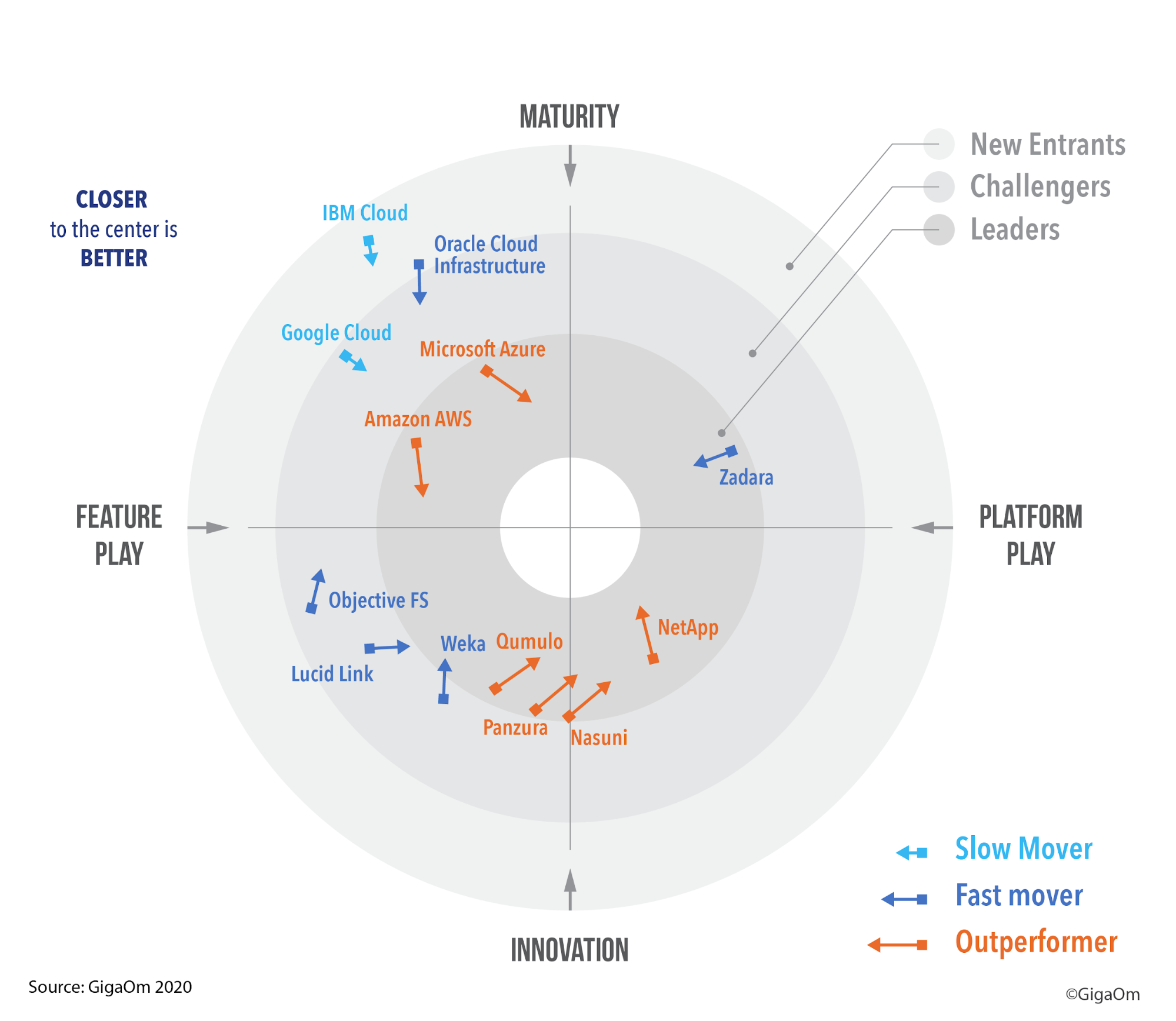Nasuni Named Leader in GigaOm Report on Cloud-Based File Storage
GigaOm Research recently highlighted Nasuni as a leader in storage and cloud vendors in their “GigaOm Radar for File-Based Cloud Storage” report.
April 23, 2020

GigaOm Research, a firm providing advice on strategic digital enterprise and business initiatives for IT, recently released the “GigaOm Radar for File-Based Cloud Storage.” The report highlights Nasuni’s leadership among 13 vendors in storage and cloud to help enterprise decision makers understand file services and solutions and evaluate performance. Nasuni is one of only two companies seen as Leaders, Outperformers and a platform play vs feature play. Nasuni’s approach is very different from the rest and is the only provider that delivers a true cloud-based approach to file storage. It is great to see industry analysts recognize that the future of file storage is a true cloud-based model.

When it comes to file storage solutions with an object-storage backend, the report discussed Nasuni’s ability for sharing files across different clouds and on-premises locations. Led by analyst Enrico Signoretti, the research noted Nasuni’s strength in offering “a solid and mature architecture, easy to use, elastic and scalable with a large number of features aimed at improving file serving and data protection for distributed organizations across the globe.” GigaOm also recognized analytics connector for enabling enterprises to take advantage of third-party analytics tools.
Nasuni is the only vendor to couple the scale and economics of object storage with NAS performance. Nasuni turned the file storage architecture upside down by decoupling the file system from the hardware device and delivering a software-defined solution, born in the cloud. Legacy hardware-based approaches like NetApp provide a lift-and-shift of their platforms to the cloud. This is not a true cloud approach, has many scale limitations, and is cost prohibitive. Smaller ‘feature players’ have significant enterprise scalability challenges with their architecture. Nasuni’s hub-and-spoke architecture allows it to scale to many more locations than the feature players whose architectures require individual edge devices to communicate with each other over private networks. This is also not a true cloud-native approach. The traditional public cloud players offer great object storage, but lack true NAS performance capabilities, which is why Microsoft and AWS are great Nasuni partners.
Nasuni developed a cloud-native architecture specifically to facilitate enterprise performance scalability, data protection, and platform management for its customers. Other options can’t scale beyond a handful of sites because data synchronization is too slow. This also impedes the frequency of snapshots sent to the cloud, which raises the risk of data loss and restricts recovery point objectives.
And that’s the point. GigaOm’s report confirms our spot as the foremost provider of cloud file services with a uniquely powerful enterprise-level solution. Nasuni consolidates network attached storage and file server silos in cloud storage, delivering infinite scale, built-in backup, global file sharing, and local file server performance, all at half the cost of traditional file infrastructures.
That’s why leading enterprises from an array of industries have replaced CAPEX hardware-based file storage with an OPEX cloud approach that enables them to share and collaborate, enhance productivity, reduce IT cost and complexity, and maximize business value of their file data.
Many large enterprises sought out Nasuni to meet their needs after experiencing the shortfalls of other solutions. Others came aboard after a hands-on product trial. Either way, our customers clearly look for enterprise-proven performance. Industry assessments from analyst firms like GigaOm provide further proof that they – and future customers – made the right choice.
Not sure what 2020 holds for cloud planning? Register to hear our CTO share the latest trends from dozens of customers and business IT leaders in the webinar, “2020 Cloud Storage Trends.”